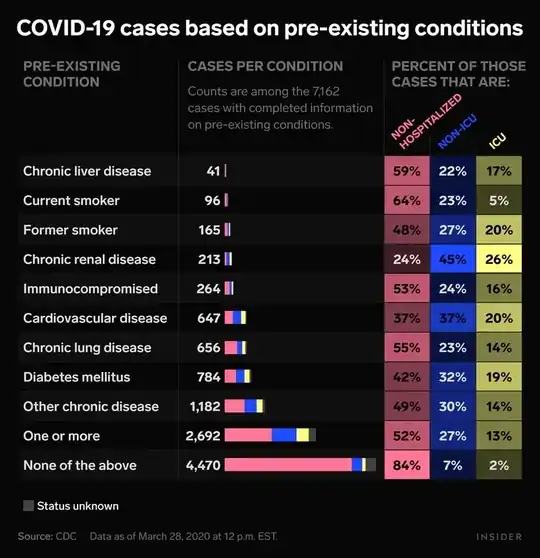A pre-publication study at NYU in New York City looked at the risk factors for more severe COVID-19 disease.
These risks included older age, especially age over 75, as well as obesity (BMI>40), and congestive heart failure, which conferred dramatically higher odds of being hospitalized for COVID-19.
The strongest risk factor was low oxygen levels upon presentation in the E.R.
https://www.medrxiv.org/content/10.1101/2020.04.08.20057794v1
According to the authors’ abstract:
Strongest hospitalization risks were age ≥75 years (OR 66.8, 95% CI,
44.7-102.6), age 65-74 (OR 10.9, 95% CI, 8.35-14.34), BMI>40 (OR 6.2, 95% CI, 4.2-9.3), and heart failure (OR 4.3 95% CI, 1.9-11.2).
Strongest critical illness risks were admission oxygen saturation <88%
(OR 6.99, 95% CI 4.5-11.0), d-dimer>2500 (OR 6.9, 95% CI, 3.2-15.2),
ferritin >2500 (OR 6.9, 95% CI, 3.2-15.2), and C-reactive protein
(CRP) >200 (OR 5.78, 95% CI, 2.6-13.8). In the decision tree for
admission, the most important features were age >65 and obesity; for
critical illness, the most important was SpO2<88, followed by
procalcitonin >0.5, troponin <0.1 (protective), age >64 and CRP>200.
Conclusions: Age and comorbidities are powerful predictors of
hospitalization; however, admission oxygen impairment and markers of
inflammation are most strongly associated with critical illness.
